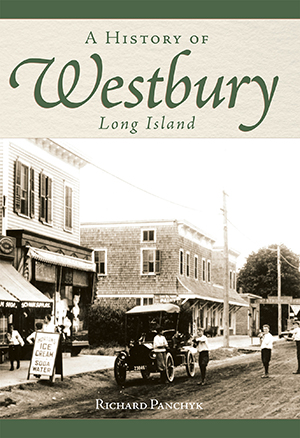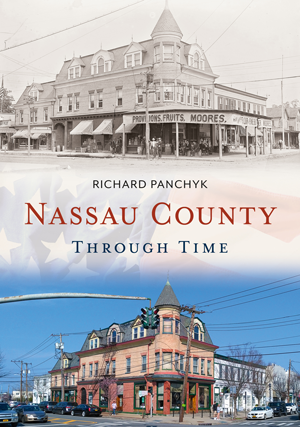The Manse
Old Westbury, Nassau County, New York
Completed in 1902, for William C. Whitney (1841-1904) by McKim, Mead & White, who in that same year had also completed a $3.5 million refurbishment of Whitney's mansion in New York at 871 Fifth Avenue. The Manse was demolished in 1941 by Whitney's grandson, Cornelius Vanderbilt Whitney (1899-1992) who built another house here for himself which is today the clubhouse for the Old Westbury Golf & Country Club. The other half of the original Whitney estate that includes several outbuildings is now part of the campus of the New York Institute of Technology....

This house is best associated with...
The Manse was built on a 1000-acre estate which included a race track and golf course that Whitney had purchased in the 1890s both as a convenient country retreat and a place to rear his thoroughbred horses. The property is noted for the vast complex of stables (850-feet long, 60-feet wide with a depth of a 100-feet) put up by a team of 75-carpenters. Unfortunately for Whitney, his second wife, Edith, died following a fall from her horse while riding to hounds on the estate, three years before the house was finished.
Designed by Howells & Stokes, just two years after its completion Whitney also died and the estate was left to his eldest son, Harry Payne Whitney. Harry was the husband of Gertrude Vanderbilt who was more than just a society heiress, she was also the exceedingly talented sculptress who founded the Whitney Museum of American Art.
Harry and Gertrude recalled McKim, Mead & White to undertake a few alterations to the not-so-old house between 1906 and 1910. They added two separate new buildings, one that housed an indoor pool and tennis court, and another that was Gertrude's studio. The studio was built in the Palladian-style with its own furnace that looked out over formal gardens. Their only son, Cornelius Vanderbilt Whitney, recalled growing up here in his memoirs High Peaks (1977),
Designed by Howells & Stokes, just two years after its completion Whitney also died and the estate was left to his eldest son, Harry Payne Whitney. Harry was the husband of Gertrude Vanderbilt who was more than just a society heiress, she was also the exceedingly talented sculptress who founded the Whitney Museum of American Art.
Harry and Gertrude recalled McKim, Mead & White to undertake a few alterations to the not-so-old house between 1906 and 1910. They added two separate new buildings, one that housed an indoor pool and tennis court, and another that was Gertrude's studio. The studio was built in the Palladian-style with its own furnace that looked out over formal gardens. Their only son, Cornelius Vanderbilt Whitney, recalled growing up here in his memoirs High Peaks (1977),
My boyhood home was a glorious country estate... a big red brick house situated on top of a hill, with rolling green pastures to the south and a wild forest to the north. Dominating the estate was a brick tower that stood two hundred feet high with a windmill on top, supplying us with water from a well in the sands below. We had a stable full of horses, a good-sized kennel, an outdoor tennis court and swimming pool, and an indoor gymnasium replete with bowling alley and squash court. And those rolling green pastures to the south of the house were dotted with fruit trees, a huge vegetable garden, a herd of Jersey cows, and lots of chickens, pigs, and pigeons. In those days there was always ample help to maintain an estate of that size.
Cornelius Vanderbilt Whitney (1899-1992) grew up to become a co-founder of Pan-Am Airlines and the co-producer of several well-known movies including Gone with the Wind in 1939. Perhaps with that film in mind, in 1942 he knocked down The Manse in favor of building a 30-room plantation-style manor designed by Delano & Aldrich which is today the clubhouse for the Old Westbury Golf & Country Club.
You May Also Like...
Categories
Share
Long Island's Gold Coast (2012), by Paul J. Mateyunas; The Manse - http://www.oldlongisland.com/2013/08/the-manse.html; High Peaks (1977), by Cornelius Vanderbilt Whitney
Connections
There is 1 member connected to this house, are you? Connect to record your link to this house. or just to show you love it! Connect to The Manse →
Bobby Kelley loves The Manse











